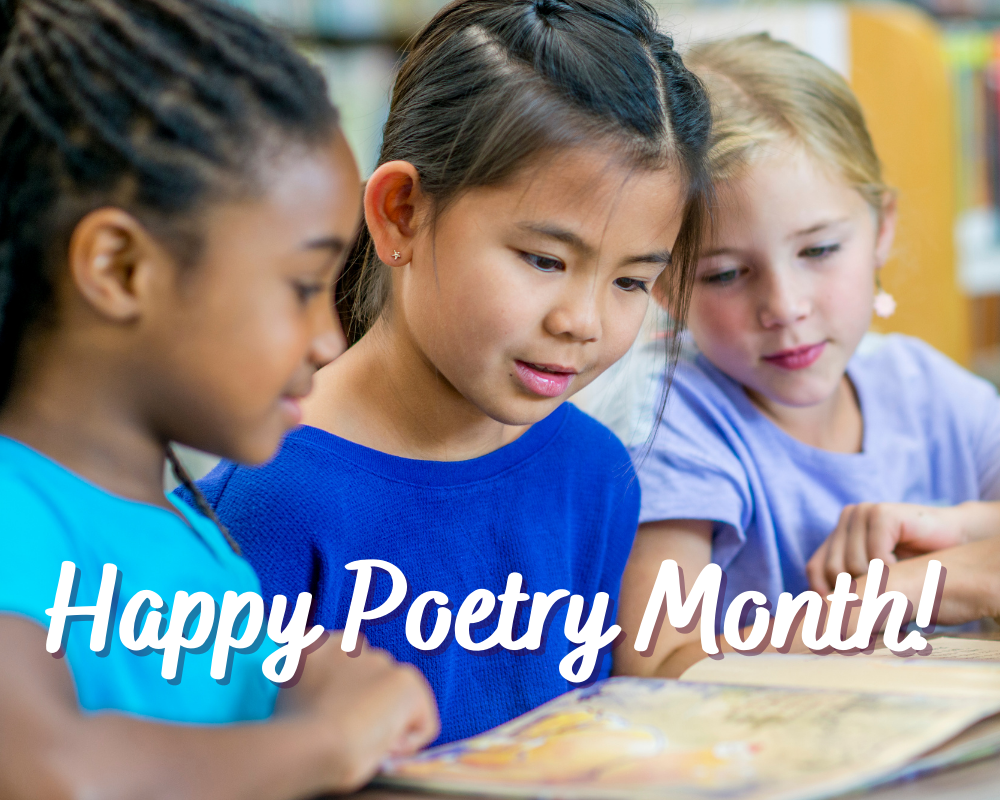April is Poetry Month!

April is National Poetry Month!
Without a doubt, poetry should be used in classrooms. You may be wondering why I am saying this– poetry is a powerful tool that is often underutilized. Poetry can work into every component of reading, and generally, kids love it!
And right now, poetry can be used as a valuable resource when addressing the enormous learning loss invoked by the COVID-19 pandemic. Let’s dive into the ways that poetry can help your students!
How can poetry improve reading comprehension?
The meanings of poems are often open to interpretation. Research tells us that teaching comprehension skills isn’t as effective as teaching specific strategies (see Shanahan’s blog) or building background knowledge (check out the Science of Reading Spotify Podcast, Season 1, Episodes 1 and 2).
Reading a poem together in a small group and discussing what it means can be eye-opening for kids, especially when each child relates and interprets meaning through a different lens. It can facilitate safe, open-ended, discussion leading to coveted “ah-hahs” for all involved, even the teacher (especially the teacher!).
On Lyrics2Learn, K-2nd grade teachers can use poems like “Who am I?” While 3rd-5th can try more advanced poems. The first two stanzas of Lyrics2Learn’s passage, “Colorful” will certainly provoke some interesting interpretations.
How can poetry improve reading fluency?
Fluency improvement involves repeated reading (RR), and it can be modeled, choral, guided, or peer to peer. Repeated reading works, and it’s not hard to implement, the only potential downside is that student buy-in can be challenging when it comes to the same text repeated over and over. Anything that educators can do to make repeated reading engaging, memorable, and less monotonous is worthwhile, which brings us back to poetry.
How can poetry combine with repeated reading, ultimately increasing reading fluency in students? Here are a few things to try!
Reader’s Theater
Through reader’s theater, the repetition is aimed towards a common goal, acting. Kids need to master the text to be able to act it out with their peers, and they must re-read the text several times to prepare for a scene. Additionally, acting out the text increases the chances of understanding the text in-depth, encourages cooperation, and gives the class an excuse to dress up.
Rhyming
Rhyming is a great way to fuse repeated reading with poems–there are already plenty of poems that rhyme (especially on L2L 😉 ). Poems that rhyme make repeated reading novel, engaging, and memorable.
Music
Obviously, music is a wonderful way to make reading content engaging, memorable, and fun. Music combines poetry, storytelling, rhythm, rhyme, repetition, assisted reading, choral reading, and music heightens emotional connection. There is no better way to make repeated reading fun and effective.
If you have other ways that you implement poetry in your classroom, we invite you to reach out or leave a comment to share with everyone! We would love to hear from you!
Happy Friday!
